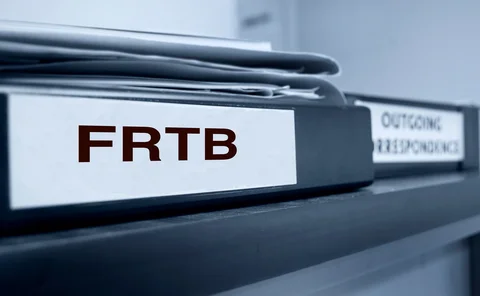Basel III
WHAT IS THIS? Basel III is a set of bank soundness rules drawn up by the Basel Committee on Banking Supervision in response to the financial crisis. It hikes the minimum amount of capital banks must hold, introduces new leverage and liquidity ratios, and limits the use of internal models.
SA-CCR proves a bitter pill for US banks to swallow
Dealers concerned new regime will punish some business lines with rise in risk-weighted assets
Buffer stops? Why banks haven’t used Covid capital relief
Amid weak credit demand, banks haven’t availed themselves of capital buffers, but they still might
Podcast: Matthias Arnsdorf on a new – and cheaper – KVA
Quant proposes approach anchored by a dealer’s default rate rather than its return on equity
Fed will start FRTB model approvals for US banks in 2021
Senior official says banks should now be deciding desk structure and readying backtests
Isda study reveals size of Covid’s trading book capital hike
Procyclicality led to aggregate 25% rise in market, CVA risk-weighted assets
G-Sibs see little sign of relief on Fed’s systemic buffer
Central bank liquidity and Treasuries will push US firms into higher G-Sib buckets
Achieving a holistic view of risk in times of crisis
What happens when risks become too global in scope and increasingly uncertain for a business to manage? Jeroen van Doorsselaere, senior director – finance, risk and regulatory reporting value propositions at Wolters Kluwer, explores the key steps to…
EBA wants Basel to revisit prudential rules on software
Banking regulator set to soften capital impact of IT assets, but proposals are still out of line with US
Joe Biden’s slow road to remaking US financial regulation
Moves on climate risk could come early; other changes may have to wait until end of 2021, or later
Basel’s Rogers: little evidence capital buffers have failed
Top regulator disputes idea banks are unable to run down buffers, urges better communication
Fed will calibrate NSFR to avoid hurting repo
Fed’s supervision head says final liquidity rule will be fast-tracked without fresh consultation
FRTB – Special report 2020
Throughout FRTB’s troubled gestation, regulators were warned that making the internal models approach too operationally complex and capital-intensive would mean few outside the biggest banks wanted to use it – with the potentially dire consequence that…
CVA desks arm themselves for the next crisis
March’s volatility forces dealers to fine-tune hedging strategies
EBA’s software compromise draws fire on two fronts
UK regulator suggests it will neuter the proposed capital relief, which banks say doesn’t go far enough
SA-CCR adoption may spur wider FX swaps clearing
With up to 90% lower exposures on offer, dealers say capital benefits could outweigh margin costs
Regulators and banks clash on FRTB capital impact study
Basel and EBA call out two banks for using “overly conservative” survey assumptions
EBA relaxes modellability hurdles for market risk capital
Flexibility granted for assessing NMRFs on options, but constraints remain on committed quotes
Leaked EU document casts doubt on leverage ratio relief
Several MEPs oppose leverage exemption for sovereign bonds, but some want SA-CCR fast-tracked
Finma relief unlocks $90bn of leverage exposure at Credit Suisse
Central bank deposit carve-out is intended to support lending
US banks’ leverage soared in Q1 before Fed’s reprieve
JP Morgan alone saw leverage exposure climb $112 billion
FRTB comes too late for Covid crisis
Expected shortfall would stop Basel 2.5 duplicate capital charges, but backtesting still a problem
Output floor cliff edge effects threaten EU banks
Capital measure to have uneven impact across five-year phase-in
SA-CCR to lift counterparty risk capital charge by 27% – Basel
Systemic dealers face biggest spike in required capital of surveyed banks
EU banks seek FRTB delay, citing ‘strain’ of virus
Firms want leeway to fight market mayhem, minus burden of new reporting rules




















